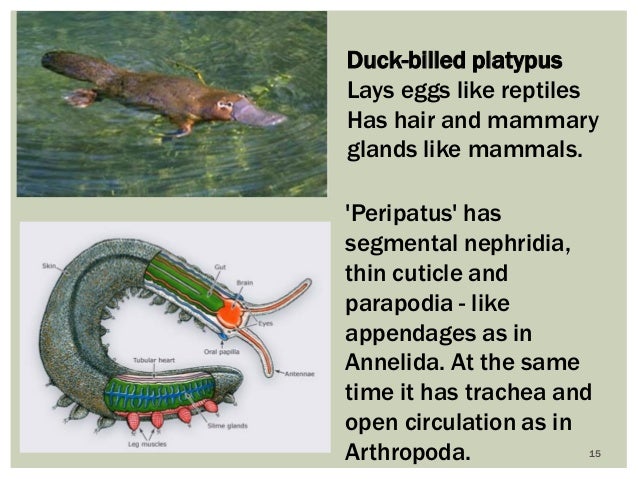
She has a single orifice for all systems: urinary, excretory, and reproductive. She waddles like a reptile with legs to the side rather underneath her body. Indeed she harkens back to an even earlier design - that of the mammal-like reptiles that predated the dinosaurs by 80 million years and lived in the late Carboniferous period, about 300 million years ago. The duckbill platypus is a current member of the ancient monotreme group. This creature's basic design, however, has endured for about 110 million years - one of the longest-lived successful body plans, say Ondine Evans and Anne Musser of The Australian Museum The champs with this good survival strategy are the egg-laying monotremes, a group that evolved about 110 million years ago in the mid Cretaceous period. (Sept.The duck-billed platypus takes true honors although the species has only been around about 100,000 years. "Defensins and the convergent evolution of platypus and reptile venom genes." Genome Research. "A Proposal to Sequence the Genome of the Platypus, Ornithorhynchus Anatinus." National Human Genome Research Institute.

In just over 200 years, the platypus has ascended from taxidermy "hoax" to poisonous guide into the animal kingdom's genetic puzzle. Now that scientists know more about how the Australian animal evolved, it's raised more questions as to why it is the way it is and how it relates to mammals, birds and reptiles. Instead, platypus sex chromosomes more closely resemble those of primitive birds, which could provide insight into the genetic footprinting that led to our own coding. Yet, they don't have the X and Y chromosomes that determine the sexes of offspring like in other mammals. They determined that platypuses split from our last common ancestor about 166 million years ago and share about 80 percent of the same genetic coding as other mammals. Like the Human Genome Project, this undertaking sought to map the entire platypus genome to understand how an animal with such a hodgepodge of traits could have evolved. ĭue to the platypus' many anomalies, more than 100 scientists recently collaborated for the Platypus Genome Project, which they completed in spring 2008.

They could then utilize that information to develop new pain relief medications and antibiotics, because today's available treatments don't affect pain induced by platypus venom. Since the platypus is one of three mammals that can produce venom, researchers want to determine the specific pain response pathway it stimulates in humans. This platypus offensive adaptation could end up helping humans. Platypus venom shares some molecules also found in reptile venom, but researchers determined that the platypus' poison capacity evolved separately. Platypus venom probably won't kill you, but it will cause swelling at the wound site and extreme pain that could last for weeks. Although dogs have died from platypus poison, there have been no recorded human fatalities. Even though the platypus only weighs around 5 pounds (2.2 kilograms), if you're engaged in a wrestling match with a male, getting stabbed with a venom-filled spur isn't a pleasant experience. That isn't to say that platypus spurs feel like a meager pin prick. Apparently, the venom isn't meant to kill other males, only to provide for a rousing fight. In fact, the male platypus produces venom mostly during the spring, which just happens to be when platypus couples breed. The only probable explanation that researchers have come up with is that males may use it offensively during mate competition. Put all of these traits together and what do you have? An animal that straddles three classes: mammal, bird and reptile.īut why would the male platypus need venom? The relatively docile animal has few predators, which include carpet snakes, eels and foxes, and doesn't need the toxin for hunting.

Aside from two other mammals - certain species of shrew and solenodons - harboring venom is a trait usually reserved for reptiles and amphibians. Though females are also born with the spurs, they fall off before adulthood. The male platypus has a spur on either hind foot that excretes venom.

As if egg-laying, nippleless nursing and electroreception in a mammalian species weren't enough for you to wrap your mind around, the platypus has one more curve ball to toss your way.


 0 kommentar(er)
0 kommentar(er)
